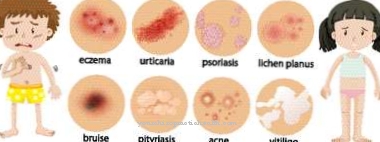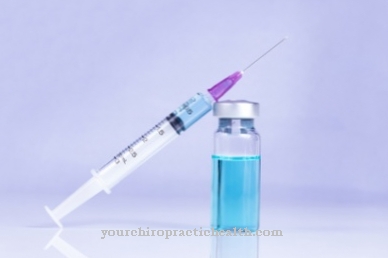As Clitoral hypertrophy In medicine, an abnormal enlargement of the clitoris is understood. Women suffer from a clitoris, which partly resembles the male penis due to its unusual size. In many cases it is a congenital malformation. However, it can also develop in the course of life for a variety of reasons.
What is clitoral hypertrophy?

© isyste - stock.adobe.com
The Clitoral hypertrophy is also under the term Megaloclitoris or Clitoromegaly guided. The malformation is divided into four classes:
- a hormonal clitoral hypertrophy
- non-hormonal clitoral hypertrophy
- a pseudo-clitoromegaly
- idiopathic clitoromegaly
There are many reasons for the development of clitoral hypertrophy. The most common cause of this malformation of the female genitals is a hormonal disorder. This is very common in younger girls. In most cases there is a defect in the enzyme CYP21. This enzyme influences the hormonal processes in the body. The result is a reduced breakdown of the steroid hormone progesterone.
As a result, both androstenedione and testosterone are excessively produced. This increased formation of androgens causes a masculinization of women.
causes
One of the most common reasons is so-called pseudo-hermaphroditism, which occurs as a result of an adrenogenital syndrome or adrenal hyperplasia. The development often takes place in early pregnancy. If the female fetus suffers from an enzyme defect, there is a disproportionate excess of male hormones.
If this disorder occurs before the 14th week of pregnancy, pronounced hermaphroditism can result. Basically, the extent of the later clitoral hypertrophy depends on the time, intensity and duration of the influence of the androgens.
An enlargement of the clitoris can also be triggered by tumors with androgenic effects. The malignant neoplasms are not only to be found in the area of the ovaries, such as the hilar cell tumor and the Leydig cell tumor.
Cancer of the adrenal gland, gonadal tumors that produce steroids, and carcinosarcomas in the urinary bladder can also have masculinizing effects. In addition, Cushing's syndrome, Fraser syndrome, gonadal dysgenesis, Turner syndrome and neurofibromatosis are among the diseases that can cause clitoromegaly.
The clitoral hypertrophy can also result from mechanical stimuli. Constant rubbing of the clitoris can cause inflammation. Enlargement of the prepuce and inner labia may suggest pseudo-clitoral hypertrophy.
Symptoms, ailments & signs
The typical sign of a megaloclitoris is the excessive enlargement of the clitoris. This can be so pronounced that the clitoris looks like a small penis. It is possible that other androgenic characteristics such as excessive male hairiness may appear. In addition to the enlarged clitoris, changes in the external genitalia can also occur.
If patients suffer from very pronounced masculinization, clitoral hypertrophy can lead to the appearance of testicular labia and occlusion of the vagina or the urogenital canal. If the enlargement of the clitoris is caused by other causes, the symptoms of the underlying disease can also occur.
Diagnosis & course of disease
A gynecologist can use a gynecological examination to determine whether there is an anatomical malformation of the female genitals. First of all, a medical history is taken. With regard to the clinical picture, special attention is paid to taking medication. This rules out whether there is exposure to androgens through doping, for example.
A microscopic examination of the vaginal and cervical secretions is then carried out using a smear. The cell structures provide information about the hormonal balance. Further research may be necessary. To confirm the diagnosis of clitoral hypertrophy, an extensive hormone test is carried out. A blood sample must be taken for this. An ultrasound scan can also help the gynecologist determine whether a tumor is present on the ovaries.
Magnetic resonance imaging or magnetic resonance therapy of the adrenal gland may be needed. Since significant postnatal enlargement of the clitoris is often due to significant hormonal stimulation, the presence of other androgen-producing tumors must also be excluded. If there are no malignant neoplasms, those affected must be examined for other diseases with androgenic effects such as Cushing's or Fraser's syndrome.
Complications
In most cases, clitoral hypertrophy does not result in any particular health complaints or complications. This disease can either be congenital or occur during a lifetime. If clitoral hypertrophy occurs for no particular reason, those affected usually suffer from another underlying disease.
In most cases, clitoral hypertrophy is the primary cause of psychological discomfort. The patients do not feel well in their bodies and often suffer from inferiority complexes and a reduced self-esteem. Furthermore, depression and other mental disorders can occur due to the illness.
Sexual life is also severely restricted by clitoral hypertrophy, as women are usually ashamed of the complaint. There is also a lot of body hair, which can be perceived as unpleasant. The quality of life is severely restricted by clitoral hypertrophy. If the cause of this disease is a tumor, it must be removed.
In some cases, the course of the disease can also be negative if the cancer has already spread to other regions of the body. However, the symptoms can be corrected through an operation. In general, it cannot be predicted whether the patient's life expectancy will be reduced.
When should you go to the doctor?
In most cases, clitoral hypertrophy does not cause any serious symptoms. A visit to the doctor is recommended if the malformation causes emotional problems or is generally perceived as unpleasant. Parents who notice a change in behavior or other abnormalities in their child should determine the cause. Since the disease is often concealed by those affected, a visit to the gynecologist can be suggested if it is suspected. Medical advice is also required if the malformation causes physical complaints.
Inflammation or pain in the genital area must be medically clarified and treated. If other symptoms are added, clitoral hypertrophy may be a serious condition that needs to be diagnosed. Affected girls and women should see a gynecologist. The actual treatment usually takes place in the hospital and the operation is performed by a surgeon. Close consultation with the responsible physician should be held after the procedure. In the case of hormonal causes, an endocrinologist or a hormone and metabolism center should be consulted.
Treatment & Therapy
If the malformation of the clitoris is diagnosed, it must be clarified whether the disease is to be viewed in isolation or as part of a symptom complex or a syndrome. The actual cause of clitoromegaly must therefore be explicitly recognized. Ultimately, clitoral hypertrophy can be corrected by surgery.
The plastic-surgical operation techniques can guarantee both subsequent sexual stimulation and a later inconspicuous appearance. Since a pathological change in the genitals can be very stressful for the affected girl, later psychotherapeutic treatment should be considered.
If the cause is hormone-producing tumors, they usually have to be removed surgically. In some cases, combinatorial procedures such as chemotherapy and radiation may be necessary. If certain enzyme defects are responsible for the malformation, hormone treatment is indicated. This therapy has an inhibitory effect on the production of androgens in the ovaries and adrenal glands.
Outlook & forecast
The prognosis of clitoral hypertrophy is tied to the causal disorder. In most cases the prospect of a cure is favorable. If there is a malformation of the clitoris, this can be corrected by a surgical procedure. It is irrelevant whether the deformity is congenital or developed due to an accident. A correction is equally possible in both cases and is carried out successfully in almost all cases.
Like any surgery, it comes with various risks and side effects. Nevertheless, they are comparatively small and manageable.Some people affected may experience wound healing problems that lead to a lengthening of the healing process. If the procedure runs without further complications, the patient can be discharged from the treatment as soon as she has recovered. A recurrence of clitoral hypertrophy in the course of life is considered unlikely in these cases.
If the clitoral hypertrophy is based on a tumor disease, the prognosis deteriorates considerably. Depending on the stage of the cancer, chemotherapy or radiation takes place. The tumor must ultimately be removed so that the symptoms can be alleviated. In the event of an unfavorable course of the disease, the patient is at risk of premature death, as the cancer can spread to his organism. In addition, cancer therapy is associated with numerous side effects and impairments in quality of life.
prevention
The development of clitoral hypertrophy cannot be averted preventively. The congenital malformation can only be diagnosed immediately after birth as part of the initial examination. In order to be able to keep the psychological stress caused by shrinking the clitoris as low as possible, early detection, diagnosis and adequate treatment are of the utmost importance. It is therefore imperative that parents attend their children's routine medical check-ups.
Aftercare
In most cases, clitoral hypertrophy does not require direct follow-up care, as the disease does not always have to be treated and therefore is not always treated. Clitoral hypertrophy should only be treated in severe cases or when there is a severe reduction in aesthetics.
In many cases, the disease can be treated relatively well even with surgery. After such an operation, the person affected should rest and take care of their body. Exertion or other physical and stressful activities should be avoided so that the body is not unnecessarily stressed. If the clitoral hypertrophy is caused by a tumor, regular examinations should be carried out by a doctor.
This allows other possible tumors to be identified and treated at an early stage so that the tumors do not spread in the woman's body. In many cases, intensive psychological treatment is also necessary to prevent depression or other psychological upsets. Loving and intensive conversations with your own family are particularly suitable. Usually, clitoral hypertrophy does not reduce the patient's life expectancy.
You can do that yourself
Dealing with clitoral hypertrophy in everyday life primarily depends on the underlying cause and the extent to which it is treated. In most cases, the focus is on treating and dealing with the underlying disease, if one is present.
Regardless of this, in many cases the girls affected mainly suffer from psychological complaints and feelings of shame due to the malformation of the genitals. It is important to strengthen self-esteem and self-awareness, to take away fears and, if necessary, to accept psychotherapeutic help. There are no means of self-help for clitoral hypertrophy itself, but the quality of life of those affected can be improved in everyday life by the measures mentioned.
Depending on the severity and cause of clitoral hypertrophy, it is also advisable for both those affected and the parents of affected girls to find out about the various treatment and therapy options. There are also self-help groups in some cities, internet forums and various social networks through which those affected or parents of affected girls can exchange ideas with one another.





.jpg)











.jpg)







.jpg)


